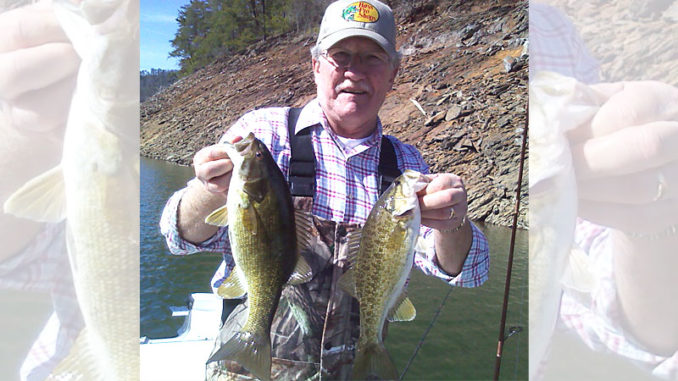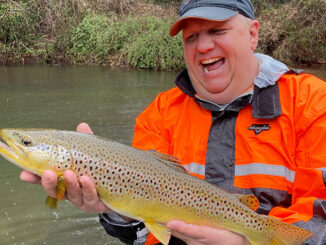
Smallmouth on Fontana Lake have rebounded
Guide James McManus of Sylva, N.C., expects the smallmouth on Fontana Lake to continue their rebound this winter.
“In 2019, we had a fish die-off, and fishing was tough overall,” said McManus, of 153 Charters. “I expect a rebound this year, because the lake has received less pressure with the poor fishing last year. Bigger smallies have also been given a little space because of the lower numbers of spotted bass.”
McManus (828-421-8125) said February has long been one of his favorite months for big smallmouth bass at Fontana.
“With a warming trend, the fish sense the upcoming spawn. So they are right on the banks,” McManus said.
Any baits cast into the shallows should get some attention from smallmouth. Productive offerings include Flicker Shads, Shad Raps, small Zoom Flukes and X-Raps. The latter two are deadly in ghost and silver sparkle colors. Other options are natural-colored, do-nothing worms in smaller sizes and jig/fluke combinations.
McManus said if the weather turns cold, slower retrieves should draw action.
Smallies can be found all over 10,230-acre Fontana, along with white bass and spotted bass. Anglers often catch mixed bags of fish.
Fish the unpressured areas for best luck
McManus said fishermen primarily targeting smallmouth bass should fish the stretch from the Point 5 area downstream. He suggests trying points right off the main channel and places just inside the creek mouths. Hazel, Eagle and Pilkey creeks are productive places. Any indentations along the main channel are also good areas.
“This area not only gives you a better chance of catching more smallies than spotted bass, but it also receives less pressure,” said McManus. He focuses on chunk-rock banks early in the month. He moves to gravel and mixed rock banks as March approaches.
Some of the most-explosive fishing can take place in open water where smallies occasionally form fairly large schools in 30 to 60 feet of water. Surface action is always a possibility, so have a rod and lure ready that can make long casts.
Most of the fishing for smallmouths involves light spinning gear, whether casting or trolling. Casting dominates when the fish are shallow; trolling is favored when the fish move deep.
McManus encourages fishermen to release the smallies and harvest the spots, which are prolific.
“The spots are better eating anyway,” he said. “We need to protect our native smallmouth bass.”




Be the first to comment